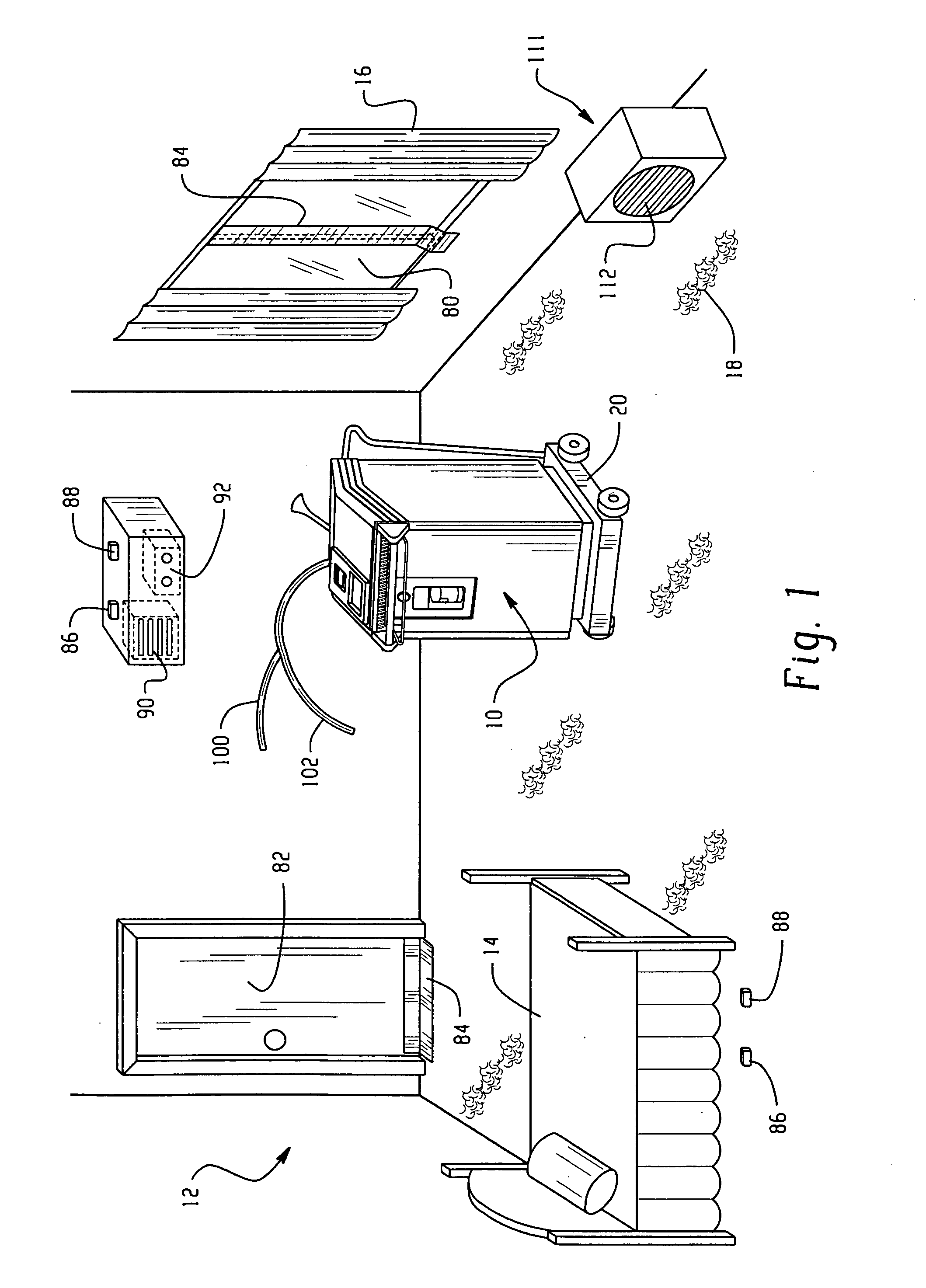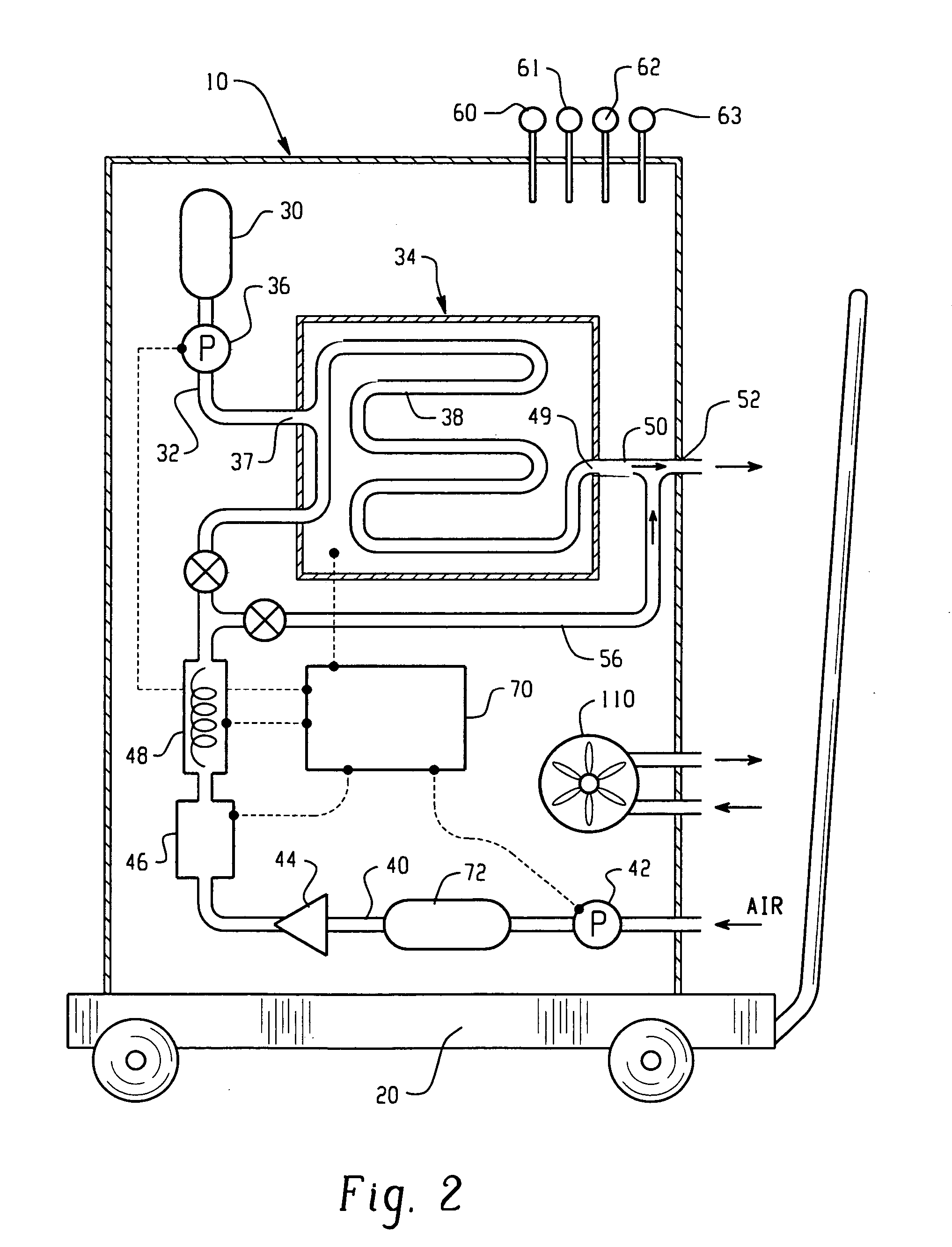Room decontamination with hydrogen peroxide vapor
a hydrogen peroxide and vapor technology, applied in the field of decontamination of enclosures, can solve the problems of difficult elimination, large enclosures, contaminated rooms and buildings, etc., and achieve the effect of reducing unpleasant odors, facilitating decontamination of rooms within a short period of time, and reducing residual amounts of decontaminan
- Summary
- Abstract
- Description
- Claims
- Application Information
AI Technical Summary
Benefits of technology
Problems solved by technology
Method used
Image
Examples
example
[0068] A STERIS VHP 1000™ hydrogen peroxide vapor generator is wheeled into a hotel room fitted with a bed and other standard room furnishings. Any air gaps in the room are sealed with tape. The vapor generator is operated to deliver hydrogen peroxide vapor into the room until a concentration of above 0.1 mg / L is achieved at a temperature of about 25° C. The hydrogen peroxide is maintained in the room for about thirty minutes. The vapor generator is then switched off. A freestanding blower with a capacity of 20-25 m3 / minute is positioned in the room. The blower is equipped with a series of catalytic converters and is used to remove hydrogen peroxide and circulate the treated air around the room. The blower also includes a dehumidification system for removing moisture from the air. The windows of the room remain closed during aeration. The hydrogen peroxide concentration in the room is reduced from about 0.7 mg / L to about 3-5 ppm in under three hours, as measured with a Draeger tube....
PUM
| Property | Measurement | Unit |
|---|---|---|
| interior volume | aaaaa | aaaaa |
| interior volume | aaaaa | aaaaa |
| temperature | aaaaa | aaaaa |
Abstract
Description
Claims
Application Information
 Login to View More
Login to View More - R&D
- Intellectual Property
- Life Sciences
- Materials
- Tech Scout
- Unparalleled Data Quality
- Higher Quality Content
- 60% Fewer Hallucinations
Browse by: Latest US Patents, China's latest patents, Technical Efficacy Thesaurus, Application Domain, Technology Topic, Popular Technical Reports.
© 2025 PatSnap. All rights reserved.Legal|Privacy policy|Modern Slavery Act Transparency Statement|Sitemap|About US| Contact US: help@patsnap.com



